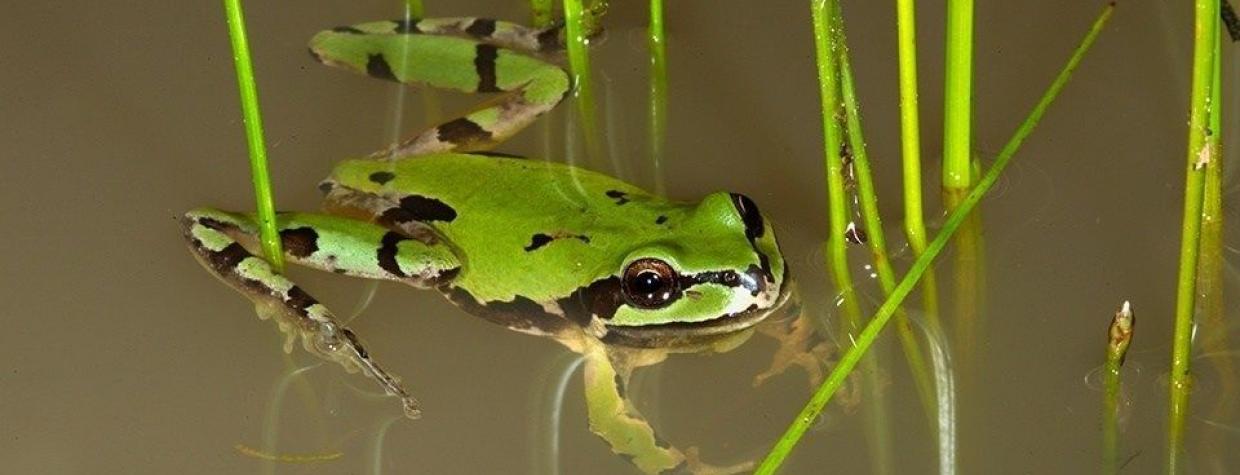More than a couple of Arizona treefrogs could fit comfortably in the palm of your hand, as these little hoppers rarely grow longer than 2 inches. Their skin is toxic, however, so holding them isn’t the best idea.
To find Arizona treefrogs, venture to the Mogollon Rim and the mountains of Central Arizona and Western New Mexico. Or check out the Huachuca Mountains in Southern Arizona — a smaller population lives there. These frogs live at elevations higher than 5,000 feet in coniferous forests, near ponds, streams and wet meadows. Because they’re nocturnal, seeing or hearing them during the day is unlikely.
Arizona treefrogs are one of five species of Hylidae, the treefrog family, in Arizona. Their green bodies help them blend into foliage. Females’ throats are white, while males’ are green or tan. Dark bands run from their snouts through their eyes and past their shoulders. Many Arizona treefrogs also have dark spots or bars around their bodies. The frogs’ toe pads allow them to scale trees with ease. Arizona treefrogs eat beetles, flies, spiders and worms.
Dormant most of the year, the frogs breed and feed in the summer, after rainfall. Breeding typically occurs in shallow pools for less than three days. Females attach their eggs to vegetation just below the water’s surface. The eggs then hatch into tadpoles with long tails.
The Arizona treefrog was named the state amphibian in the mid-1980s. Through the Arizona Game and Fish Commission, thousands of schoolchildren studied amphibian species and voted for their favorites. The treefrog was up against three toads and won by more than 3,000 votes. In 1986, the state Legislature approved the decision, making the Arizona treefrog an official symbol of Arizona.

